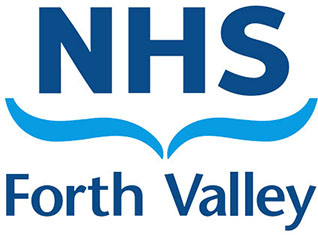Researchers say pioneering emergency eye care trial leads to quicker treatment times
A trial virtual emergency consultation programme for eye patients has led to quicker treatment times and removed the need for follow up hospital appointments in more than half of cases, according to researchers.
The tele-ophthalmology system, developed by the University of Strathclyde and by NHS Forth Valley, uses a live video feed to securely connect doctors, opticians and patients.
Using a mixture of 3-D printed technology developed at Strathclyde, combined with the Scottish Government funded Attend Anywhere Video Consultation Platform, eye doctors can remotely examine patients in emergency departments and High Street opticians.
The trial, which started in April 2018, has now become part of usual practice in the Emergency Departments at Forth Valley Royal Hospital in Larbert and in the Minor Injuries Unit at the Stirling Health and Care Village.
All seven on-call consultants within NHS Forth Valley use the technology. It is also being trialled in one of Scotland’s busiest A & E departments at Glasgow’s Queen Elizabeth University Hospital in collaboration with NHS GG&C’s Medical Devices Unit, which will ensure the roll out of the adaptor meets medical device regulations.
NHS Forth Valley has received more than 80 consecutive video referrals for urgent eye problems, with the need for a second appointment deemed to have been saved in an estimated 50 per cent of cases.
Tele-ophthalmology is a branch of telemedicine that delivers eye care through digital medical equipment and allows clinicians to provide quality health care outside of clinics.
Dr Mario Giardini from the University of Strathclyde’s Department of Biomedical Engineering, who developed the system in collaboration with NHS consultant and Strathclyde honorary lecturer Dr Iain Livingstone, said: “It means anyone who goes into the emergency optometrist or the emergency department with a serious eye problem can be seen by a specialist straight away through telecommunications and be diagnosed there and then.
“It allows a totally new way of working that combines our Strathclyde technology for eye imaging, developments in mobile camera technology, high data transmission speeds, and emerging telemedicine software.
“The system allows emergency eye patients to be seen much quicker, enhancing decision-making and therefore, patient outcomes, and we’re applying for an extension to take it nationwide. We’ve already had interest from other Health Boards across Scotland.
“By allowing doctors to connect remotely to the instruments, instead of having to transport the patients to hospital, it allows remote areas to access emergency eye care, thus promoting healthcare equality.”
In hospital A&E Departments, eye emergencies are first seen by a non-specialist and then typically referred to a specialist eye doctor for follow-up.
The technology uses a slit lamp microscope, which emits an intense beam of light to examine the eye, along with a tablet computer transmitting a live video feed. This enables a consultant to view the magnified eye remotely. It also uses adapters based on Strathclyde technology to see the back of the eye.
An audio feed is also transmitted through the tablet computer, transforming the microscope into a ‘talking slit lamp’. Through it, the consultant can speak with the treating doctor or nurse and with the patient.
Project Lead and NHS Forth Valley Consultant Ophthalmologist, Dr Livingstone, said: “The system means that emergency cases are identified earlier and theatre teams can be mobilised more quickly, with treatment starting immediately when needed.
“The feedback shows that in an estimated 50 per cent of cases, the need for a hospital appointment has been saved.
“When a colleague needs a steer on what to do, we can have a live view through their equipment, and connect them with a more nuanced plan, often preventing a trek to the eye clinic, and hours of waiting in a second waiting room.
“We can also institute urgent treatment remotely when it’s needed and can also de-escalate things.
“It’s much quicker than starting from scratch, which saves time and makes clinics more manageable.”
The team has also performed a preliminary test with optometrists, who are able to make video calls to the ophthalmologist.
Alloa-based optometrist Linda Hunter has been taking part in the trial and says the virtual consultations have benefits for the patient.
She said: “Patients can get quite anxious but if they can get a face to face consultation with an ophthalmologist and get things explained to them it can help put their mind at rest.
“If they do need hospital treatment they get put into the appropriate clinic more quickly.
“It’s very easy to use and the image and sound quality are very good. It would be great to see it in more widespread use – I can see it being particularly beneficial in rural areas.”
Prescriptions can also be wired directly to the GP, which again save the patients having to visit a specialist clinic.
The teams say that patients who have used the system have all reported high levels of satisfaction.
Forth Valley was awarded £37,200 from Test of Change funding through the Scottish Government’s Technology Enabled Care (TEC) Programme for the project.
Cabinet Secretary for Health and Sport, Jeane Freeman, said: “I greatly welcome this successful trial of a Scottish-Government funded initiative.
“Our Digital Health and Care Strategy aims to allow greater and more convenient access to routine care and specialist support.
“This project demonstrates our commitment to new approaches and new technology that improve patient experiences, promote better healthcare outcomes, and support clinicians in their work.
“Across the country we are seeing an expansion of Attend Anywhere across a range of disciplines, and I look forward to its continuing success.”





